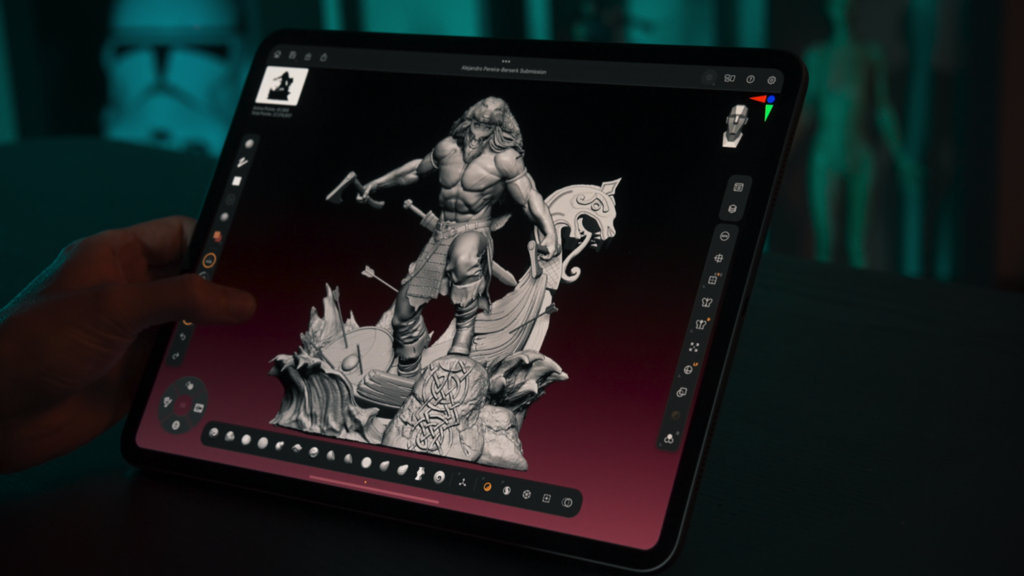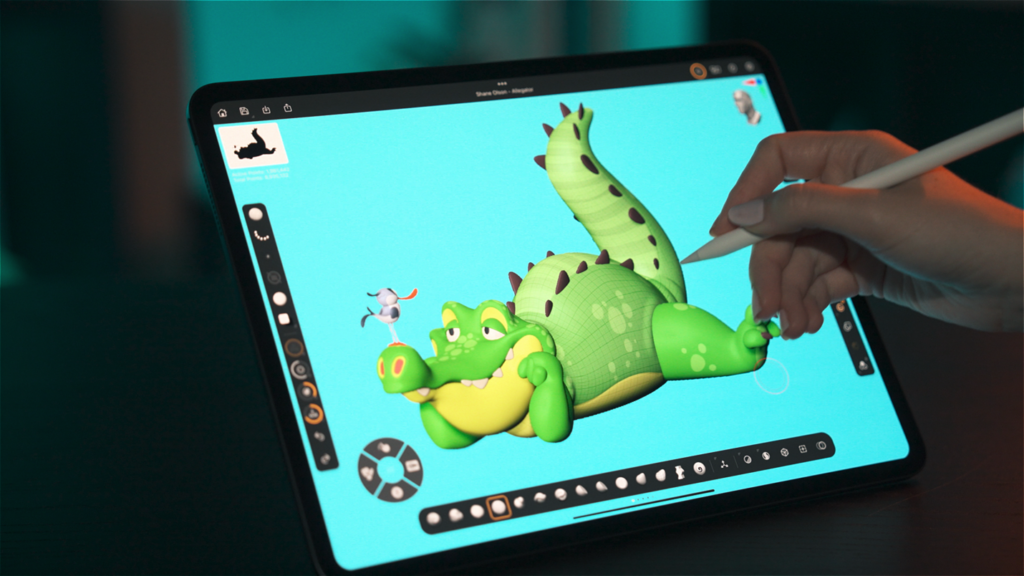Maxon issues regular monthly updates to its software but also ups the ante seasonally with a more substantial release. Well, it is fall, and while it is not yet time to turn the clocks back, it is time to jump ahead to the fall release of Maxon One, and in case you have lost count, this is Maxon One 2025. This release contains a lot of new tech across the product lines. This includes new options for art-directing simulations and particles with Cinema 4D, One-click caustics in Redshift, and new Geo capabilities in Red Giant. Maxon also released ZBrush for iPad, enabling mobile access to the sculpting and painting tool.

At IBC 2024, Maxon has rolled out its bundled Maxon One fall release, which includes new technology and enhancements across Cinema 4D, Forger, Red Giant, Redshift, Universe, and ZBrush. In particular, this Maxon One 2025 release includes a special focus on ZBrush that Maxon’s David McGavran said will change the way people interact with their sculptures and how they create digital art. Other notable Maxon One highlights include art-direct simulations and particles made easier with Cinema 4D, caustics generated with one click in Redshift, new Geo capabilities in Red Giant, and mobilizing ZBrush.
Maxon ships updates monthly throughout the year, but twice a year it bundles certain efforts and introduces major initiatives—and this is one of those releases. It is also the time when the company bumps up the version numbers to its offerings, which now fly under the model year 2025.
Before diving into the new features in the Maxon One fall release, Philip Losch, Maxon chief technology architect, provided a recap of the spring release, which introduced a brand-new particle system for Cinema, 4D, which enables the animation and simulation of millions of particles at once. The company also introduced Maxon Studio for creation of complex effects that can be packaged as capsules. And, the company released Redshift NPR (non-photorealistic rendering).
“All of that was well-received by our customers, but let’s be honest, Version 1 is Version 1, and a lot of the feedback that you get [comes] only after you commercially ship something. This is why we decided to continue this work,” Losch said. “We want to evolve [the] good and make it even better and polish any workflow that is part of that. And that’s what you see in our September release.”
ZBrush for iPad

Losch pointed out that in the past, the strategy had been all about optimizing Maxon software for the desktop and then for the laptop. Now, the company also wants to extend this to mobile. One of the big steps in this direction is the rollout of ZBrush for iPad, with a reimagined user interface and touch-based controls.
ZBrush for iPad takes ZBrush sculpting and painting on the go, enabling artists to create in real time, anywhere. It has many of the same tools and features that the desktop version offers and more. The app contains a highly customizable UI so users across different industries can customize the features and tools they use most often. There is an extensive brush system that is identical to that of the desktop version, and users can also import brushes from their desktop onto the iPad. And, being that it is running on Apple hardware, it also comes with Apple’s pen- and touch-based capabilities.
ZBrush has always been known for its high polygon counts and high level of detail. While users get the convenience of mobile with ZBrush for iPad, they do not have to sacrifice when it comes to polygonal counts, though that is dependent on their iPad’s version and memory. For example, the latest M4 iPad with at least 1TB of storage can reach up to 92 million polygons per mesh, according to Maxon.
ZBrush for iPad is available now on the app store. The free plan comes with limited features and a set of 28 brushes. The paid version, through Maxon One or the ZBrush subscription, comes with over 200 brushes and the full set of features. ZBrush for iPad requires iPadOS 17 or later, and is available on iPad models with A12 Bionic or later.”
Cinema 4D

Also in Cinema 4D:
The big news for Cinema 4D users pertains to rendering, as every subscription of Cinema 4D now gives users full access to their GPU when rendering with Redshift. Also, in an ongoing effort to make simulation and particle effects faster and easier, Maxon has added new options in Cinema 4D that enable users to more easily art-direct those effects.
- A new Follow Spline modifier for creating advanced motion graphics effects, making it easy to flow particles along a vector shape.
- Pyro enhancements for dialing-in a specific look.
- A new Field Driver tag for adding procedural animations to objects.
- A new Object Profiling Manager to help optimize viewport performance.
- Improved OCIO color management for consistent color.
- Exchange format support to help with exporting instances and skeletal animations to USD and working with presets stored in Substance 3D materials.
Redshift

Redshift 2025 continues to allow users to render both photorealistic and non-photorealistic results using virtually any GPU or CPU. Toon rendering has been expanded to offer a global contour option that allows line drawing to be easily applied to an entire scene, while also enabling users to define the look of toon lines and shading more precisely with contour tone mapping and custom user-created tone map patterns. Meanwhile, easy Brute Force caustics enable users to easily set up realistic patterns of light passing through glass, gems, and other transparent surfaces.
Additional improvements to Redshift 2025 include an option to use procedural shaders as the input for sprites and a new Volume Depth AOV pass to assist when compositing clouds, smoke, and explosions.
Every Cinema 4D subscription now includes access to the full power of Redshift GPU rendering. There is also tighter integration with the addition of native Redshift cameras within Cinema 4D’s Crane, Morph, and Motion cameras. Users can also take advantage of presets in Substance 3D materials and improved options for adjusting the size rotation and color space of the materials.
Red Giant
Red Giant 2025 received various new features including additional capabilities in After Effects with Geo, Red Giant’s new tool (released in April) for texturing and repeating 3D geometry in After Effects. This includes added support for rigged animation and built-in depth of field. Red Giant also has a refreshed Particular Designer with optimized preset search and navigation, along with other quality-of-life improvements. Red Giant also features Parametric Curve, a new tool for handling color and HDR video, so users can manipulate footage with an HDR curve.
Coming soon…
These features are some of the highlights in the releases. And as McGavran pointed out, Maxon usually spends a significant focus on gaming, VFX, and MoGraph, but throughout the coming months, the company will be increasing its attention on AEC visualization, introducing new tech that helps solve real-world problems in the AEC vis space. To do this, the company will be partnering with its Nemetschek siblings, he says, including Graphisoft and Vectorworks. Meanwhile, Maxon will continue its close partnership with Adobe as well as its more recent efforts with Epic and Unity.